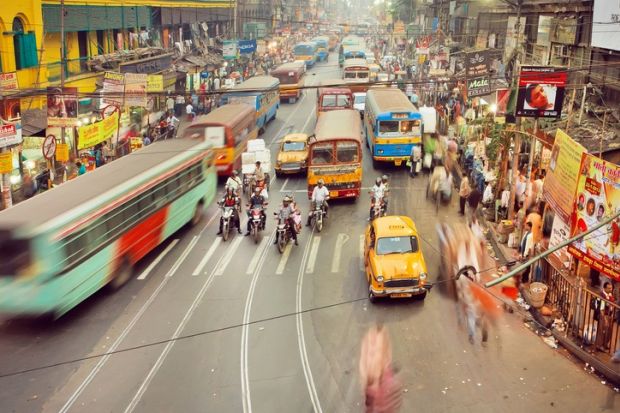The recent landslide general election victory by India’s ruling National Democratic Alliance, led by the Bharatiya Janata Party (BJP), will have big implications for the country’s universities.
The re-elected government has outlined a 100-day education agenda that includes the replacement of the University Grants Commission with a new governing body, the Higher Education Commission of India; a new, decentralised accreditation system; the expansion of the Institutes of Eminence excellence programme; and a new National Research Foundation as an umbrella body for funding science and technology research.
But the first item on the agenda was the report of the committee formulating India’s New Education Policy (NEP), which was published on 31 May. This policy – open for feedback until 1 July – has been long in the making. It was part of the BJP’s previous victorious election campaign in 2014, when a new education policy was already long overdue. Independent India’s first education policy was framed in 1968, and the second in 1986, revised in 1992.
More than a quarter of a century is a long time to wait for a replacement – especially for a country that has changed as fast as India has since the liberalisation of 1991. The education system’s rooted stagnancy cannot go on as we face up to the further realignment of human potential that artificial intelligence will bring.
What is particularly striking is the NEP’s statement that “the needs of the 21st century require that liberal broad-based multidisciplinary education become the basis for all higher education”, including undergraduate programmes in “professional, technical, and vocational disciplines”.
This is a welcome sea change in a nation still largely trapped between an antiquated, colonial model of general education in the arts and sciences on one the hand, and a fevered fetish for professional education on the other, mainly in engineering. Even champions of liberal education, myself included, have tended to define it against professional education, reinforcing the divide that goes back to Cardinal Newman’s idea of liberal knowledge as its own end.
But the NEP committee instead advocates a “liberal definition of the arts that goes back to the idea of the 64 ‘kalas’ or arts canonised in India’s ancient books, which included singing, playing musical instruments, and painting, but also ‘scientific fields’ such as engineering, medicine, and mathematics”. There is a risk that such an expansive definition may be almost shapeless, but I can also see that the committee’s understanding of the symbiotic relation between the liberal and the professional stems from that expansiveness.
The idea of energising professional education with elements of liberal education is not far from the original vision behind the Indian Institutes of Technology, which were always meant to go beyond mere technological competence and create holistically educated technocrats. “Given that professional and vocational fields are also better served in many cases by those obtaining a liberal education,” the policy states, “professional, technical, and vocational education programmes will arrange to enable…students to pursue a truly liberal undergraduate education.”
But the traffic is two-way, with all undergraduate liberal arts programmes also being required to have “a robust element of skills and professional competence”. It is important not to see this as an instrumentalisation of liberal education, which would defeat its very purpose – but rather as a broadening of its range to include aspects of experiential learning and community service.
There is already rising interest in the liberal arts among India’s expanding middle class, which enjoys a certain freedom from the traditional identification of higher education with immediate, vocational avenues of upward mobility, thinking of it more in terms of personal and social enrichment. Still, India has been historically adept at snatching defeat from the jaws of victory and it remains to be seen whether a right-wing government that has a troubled relationship with universities will be able to look beyond the “liberal” label and embrace the NEP committee’s recommendation to build on such overdue developments in one of the world’s largest higher education systems.
Saikat Majumdar is professor of English and creative writing at Ashoka University.
Register to continue
Why register?
- Registration is free and only takes a moment
- Once registered, you can read 3 articles a month
- Sign up for our newsletter
Subscribe
Or subscribe for unlimited access to:
- Unlimited access to news, views, insights & reviews
- Digital editions
- Digital access to THE’s university and college rankings analysis
Already registered or a current subscriber? Login








